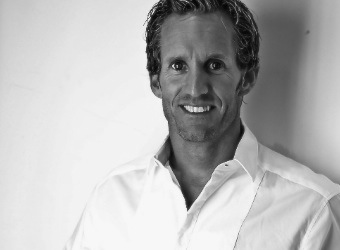To blend or bend, that is the question
Share

There comes a time in everyone’s life when the truth makes itself known. The truth I am referring to is a personal truth regarding what you are doing with your life. Like some of you reading this, I spend the majority of my time helping organisations to get clear on who they are as a brand and community. This is usually based on their value proposition and ‘market opportunity’: where they can best make their mark given the existing landscape. But let’s take a moment to sidestep brand positioning and ask a much more important question: who are we as people and what we are prepared to sacrifice in return for a nicer car?
Blending
Humans are generally very versatile. We adapt to varying social environments and read others well. There are exceptions of course, but as a species we are socially adaptive. This skill has been developed over centuries as a necessity. A survival technique, ‘blending in’ to avoid being devoured. Terrific, you say? Look at me! Look at how clever we are? Hmm… sit down, nobody’s clapping or playing the national anthem. In more recent years, our ability to ‘blend’ has resulted in great harm and is the most common cause of what I refer to as ‘soul death’. You see, sometimes we blend beyond our means or we blend in with someone or something that we shouldn’t.
The cost of blending
At the risk of sounding like Gandhi, most of us have very little time to sit still and get in touch with our values and boundaries. If we did, we would be aware of the high cost of some blending exercises. When we blend, we call on parts of our character that may not be all that native or familiar – not our everyday character. Sometimes this is a good thing and helps us grow and develop latent facets of our personality, and at other times we stretch a little too far and, in doing so, compromise our values… often without knowing it.
Anthony Hopkins does not eat people
Remember The Silence of the Lambs (1991)? One of the lead actors was Anthony Hopkins who played pathological psychopath Hannibal (the cannibal) Lecter. To be convincing in the role, Sir Anthony had to study psychopaths and adapt and blend his native character into the archetype of a killer. Like Hopkins, we all have dormant archetypes that we can call on when need be. If we stay in character too long, however, we begin to inherit some of the character traits. While these are (usually) not quite as bad as cannibalism, they can still have a devastating effect on the climate of a workplace. In fact, most deviations from our authentic self will harm the relationships we have with those around us, along with the climate (mood) and culture.
Why we blend
We blend into our environments to (a) survive and (b) succeed. Unfortunately in corporate Australia, the overwhelming majority of organisational environments that we try to blend in with have enormous cultural problems. What is deemed ‘normal’ within an organisation is often far from normal or sustainable when it comes to the way humans need to relate and simply ‘be’. Some examples include a heavily promoted (yet often unspoken) sense of ‘professionalism’ where emotional suppression is encouraged. Another is a culture motivated by fear and a sense of scarcity (missing out). These are just two unhealthy, dysfunctional cultural issues facing some of our biggest brands. There are many more.
The point is that as highly adaptive beings, we often adapt to fit in to work environments that are essentially unhealthy communities. This compromises our ‘sense of self’, which when developed is our main channel for personal happiness. The net result: unhappy people.
The answer: bend don’t blend
Through the course of this year many of us will enter new work environments or see dramatic changes in our current work habitat. The healthiest and most sustainable course of action is to recognise what we will and won’t do in order to fit in. This can be a difficult ask, so to make it easier, here are five ways to help identify if you are bending beyond your boundaries and are in fact in the blender:
- you feel nervous about sharing your personal views,
- you obsess about the consequences of your actions,
- you only relax when you leave work w you wake up with a headache, or
- you are covered in milk, it’s loud and you can taste banana.
It’s generally a very long and hard slog to change any workplace culture. It’s much easier to change ourselves and the way we choose to relate to those around us. Identifying excessive personal compromise is important, but rejecting it can be the key to happiness… because there’s more to life than just fitting in.
Did you know: in each issue of the print edition, Marketing includes the very best opinion articles curated from our huge industry blogging community, as well as exclusive columnists writing on the topics that matter? Becoming a subscriber is only AU$45 for a whole year, delivered straight to your door. Find out more »















